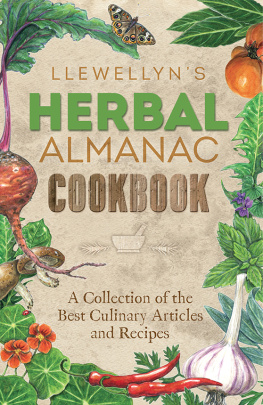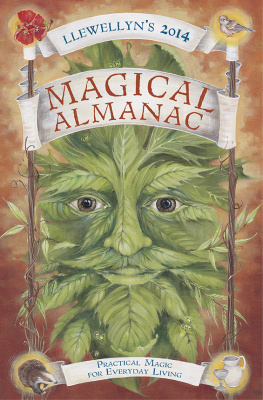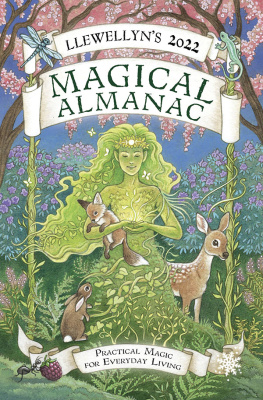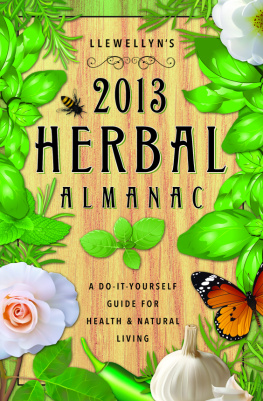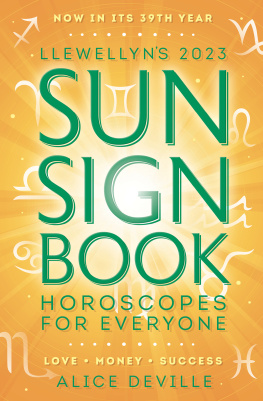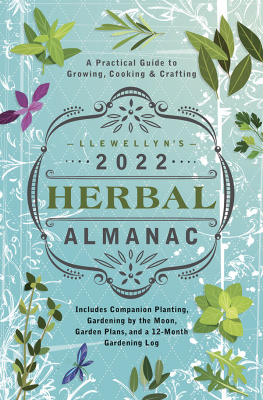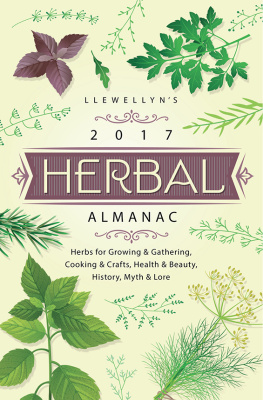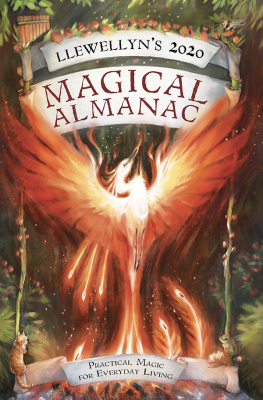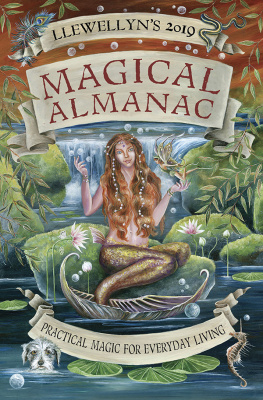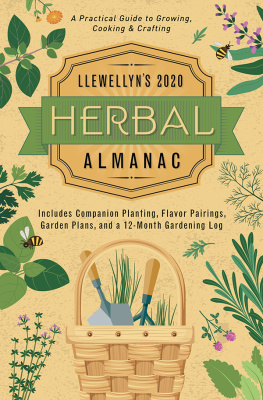Llewellyn - Llewellyn’s herbal almanac cookbook : a collection of the best culinary articles and recipes.
Here you can read online Llewellyn - Llewellyn’s herbal almanac cookbook : a collection of the best culinary articles and recipes. full text of the book (entire story) in english for free. Download pdf and epub, get meaning, cover and reviews about this ebook. year: 2015, publisher: Llewellyn Worldwide, genre: Home and family. Description of the work, (preface) as well as reviews are available. Best literature library LitArk.com created for fans of good reading and offers a wide selection of genres:
Romance novel
Science fiction
Adventure
Detective
Science
History
Home and family
Prose
Art
Politics
Computer
Non-fiction
Religion
Business
Children
Humor
Choose a favorite category and find really read worthwhile books. Enjoy immersion in the world of imagination, feel the emotions of the characters or learn something new for yourself, make an fascinating discovery.
- Book:Llewellyn’s herbal almanac cookbook : a collection of the best culinary articles and recipes.
- Author:
- Publisher:Llewellyn Worldwide
- Genre:
- Year:2015
- Rating:3 / 5
- Favourites:Add to favourites
- Your mark:
- 60
- 1
- 2
- 3
- 4
- 5
Llewellyn’s herbal almanac cookbook : a collection of the best culinary articles and recipes.: summary, description and annotation
We offer to read an annotation, description, summary or preface (depends on what the author of the book "Llewellyn’s herbal almanac cookbook : a collection of the best culinary articles and recipes." wrote himself). If you haven't found the necessary information about the book — write in the comments, we will try to find it.
Llewellyn: author's other books
Who wrote Llewellyn’s herbal almanac cookbook : a collection of the best culinary articles and recipes.? Find out the surname, the name of the author of the book and a list of all author's works by series.
Llewellyn’s herbal almanac cookbook : a collection of the best culinary articles and recipes. — read online for free the complete book (whole text) full work
Below is the text of the book, divided by pages. System saving the place of the last page read, allows you to conveniently read the book "Llewellyn’s herbal almanac cookbook : a collection of the best culinary articles and recipes." online for free, without having to search again every time where you left off. Put a bookmark, and you can go to the page where you finished reading at any time.
Font size:
Interval:
Bookmark:
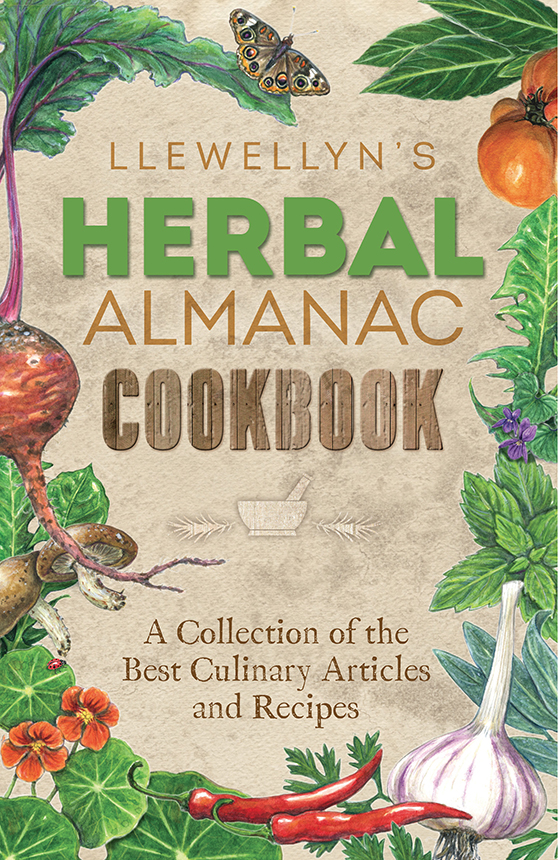

Llewellyn Publications
Woodbury, Minnesota
Copyright Information
Llewellyns Herbal Almanac Cookbook: A Collection of the Best Culinary Articles and Recipes 2015 by Llewellyn Publications.
All rights reserved. No part of this book may be used or reproduced in any matter whatsoever, including Internet usage, without written permission from Llewellyn Publications, except in the form of brief quotations embodied in critical articles and reviews.
As the purchaser of this e-book, you are granted the non-exclusive, non-transferable right to access and read the text of this e-book on screen. The text may not be otherwise reproduced, transmitted, downloaded, or recorded on any other storage device in any form or by any means.
Any unauthorized usage of the text without express written permission of the publisher is a violation of the authors copyright and is illegal and punishable by law.
First e-book edition 2015
E-book ISBN: 9780738746906
Book design by Bob Gaul
Cover illustration and interior art by Rena Ekmanis
Editing by Ed Day
Library of Congress Cataloging-in-Publication Data
Llewellyns herbal almanac cookbook : a collection of the best culinary articles and recipes.First edition.
1 online resource.
Description based on print version record and CIP data provided by publisher; resource not viewed.
ISBN 978-0-7387-4690-6ISBN 978-0-7387-4563-3 1. Cooking (Herbs) I. Llewellyns herbal almanac. II. Title: Herbal almanac cookbook.
TX819.H4
641.6'57dc23
2015009661
Llewellyn Publications is an imprint of Llewellyn Worldwide Ltd.
Llewellyn Publications does not participate in, endorse, or have any authority or responsibility concerning private business arrangements between our authors and the public.
Any Internet references contained in this work are current at publication time, but the publisher cannot guarantee that a specific reference will continue or be maintained. Please refer to the publishers website for links to current author websites.
Llewellyn Publications
Llewellyn Worldwide Ltd.
2143 Wooddale Drive
Woodbury, MN 55125
www.llewellyn.com
Manufactured in the United States of America
Contents
by Delores Duchen
by Caroline Moss
by Deborah C. Harding
by K.D. Spitzer
by Carolyn Moss
by K.D. Spitzer
by ShadowCat
by James Kambos
by Dallas Jennifer Cobb
by David L. Murray
by Carly Wall
by Cindy Parker
by Magenta Griffith
by Chandra Moira Beal
by Chandra Moira Beal
by Jonathan Keyes
by Tammy Sullivan
by Caroline Moss
by Lynn Smythe
by Dallas Jennifer Cobb
by Zaeda Yin
by Nancy Bennett
by Lynn Smythe
by Susun Weed
by Carly Wall
by Caroline Moss
by Sara Greer
by Tammy Sullivan
by Delores Duchen
by Carly Wall
by Carly Wall
by Chandra Moira Beal
by Lynn Smythe
by Magenta Griffith
by Chandra Moira Beal
by Elizabeth Barrette
by Stephanie Rose Bird
by Dallas Jennifer Cobb
by Anne Sala
Disclaimer
The publisher and the authors assume no liability for any injuries caused to the reader that may result from the readers use of content contained in this publication and recommend common sense when contemplating the practices described in the work.
The old-fashioned remedies in this book are historical references used for teaching purposes only. The recipes are not for commercial use or profit. The contents are not meant to diagnose, treat, prescribe, or substitute consultation with a licensed healthcare professional. New herbal recipes should be taken in small amounts to allow the body to adjust.
Introduction
Why an Herbal Cookbook?
Everybody eats. Its as simple as that.
Our first almanac about herbs, The Organic Gardening Almanac, was published more than two decades ago. While being a good steward to Mother Earth is still important, many things have changed, including the increased popularityand needfor organically raised produce. A few years later, the Herbal Almanac emerged, reflecting the fact that using herbs as medicine, in beauty products, and in craft projects were gaining acceptance (or re-acceptance, as the case may be), as many people had become more aware of the impact their activities had on the environment.
The one use that never went out of style is eating.
Herbs can enhance ordinary dishes and make good recipes absolutely delectable. Also, in the Herbal Almanac Cookbook, you might find unexpected ways to use herbsin liqueurs, as a sweetener, and even as a unifying ingredient over several courses of a meal. With contributions from Elizabeth Barrette, Stephanie Rose Bird, James Kambos, Anne Sala, and Tammy Sullivan, this book includes recipes for beverages, main dishes, and condiments, as well as the multiple uses for several herbs, flowers, and spices.
In addition, many of the recipes in this compilation go beyond cooking instructions and explain the importance of the herbs used. Where did it originate? Why was it revered? What was the folklore behind it? Who introduced it to mainstream culture? Some authors sometimes expound on their personal reason an herb is especially important to their traditions. Others offer a way to make a meal magical.
So whether you enjoy foraging for edible weeds, making yarrow beer, or judiciously adding herbs to a brunch menu, remember that there is a often a story that goes along with it. If there isnt, its a chance to create a story of your own.
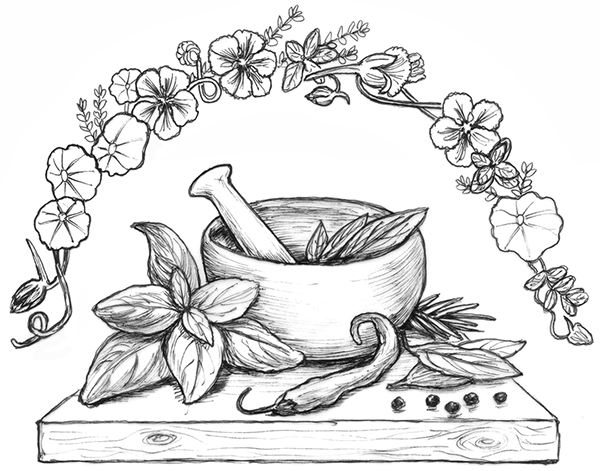
Back to
the Basics
Edible Weeds in Our Gardens
by Deborah Duchen
In some ways, weeds are plants with which gardeners have a very close relationship. We hold them and pull them and hack them and uproot them. In fact, we possibly have more physical contact with our weeds than with our ornamental plants. But how much do we actually know about them?
Too many gardeners dont think of weeds as plants. They are simply weedsunwelcome trespassers in our domain. But have you ever wondered why some wild plants make weeds of themselves? They almost seem to prefer human company to life in the untouched wild. Well, in many cases, that is because these plants were naturalized many centuries ago for use as food, medicine, or other purposes. In a sense, they are semi-domesticated. Although we abandoned their use as our lifestyle changed, they faithfully continue to follow us.
In this article, we will look at a few of the most common weeds found in gardens throughout North America. In each case, we will examine the history of the plant itself, its historical uses, and suggestions for present-day usage.
Dandelion (Taraxacum officinale)
Dandelions, although they seem to grow everywhere, are not native to North America. Like most Americans, the dandelion is an immigrant. It was brought here by the earliest English settlers (maybe even on the Mayflowe r !), because it was considered absolutely essential to survival. It provided food, medicine, and wine for the whole family. No self-respecting English housewife would be caught without dandelion in her kitchen garden. But the history of dandelion goes back to before Plymouth Rock.
Probably originating in Asia Minor, the dandelion spread throughout the known world before written history began. In China, it was called earth nail for its long taproot. In Japan, it is still considered highly ornamental, as more than 200 varieties in colors ranging from white to copper are cultivated by florists. The Greeks learned to grow the tender greens and dandelion even took a place in Greek mythology. The Romans, typically, mimicked the Greeks. But they also noted its usage in the places they conquered. When Caesar (an amateur botanist himself) invaded the British Isles, he found the dandelion in use among the Celts, who made wine from the flowers, a favorite country wine in England to this day. The Gauls, todays French, appreciated the greens.
Font size:
Interval:
Bookmark:
Similar books «Llewellyn’s herbal almanac cookbook : a collection of the best culinary articles and recipes.»
Look at similar books to Llewellyn’s herbal almanac cookbook : a collection of the best culinary articles and recipes.. We have selected literature similar in name and meaning in the hope of providing readers with more options to find new, interesting, not yet read works.
Discussion, reviews of the book Llewellyn’s herbal almanac cookbook : a collection of the best culinary articles and recipes. and just readers' own opinions. Leave your comments, write what you think about the work, its meaning or the main characters. Specify what exactly you liked and what you didn't like, and why you think so.

